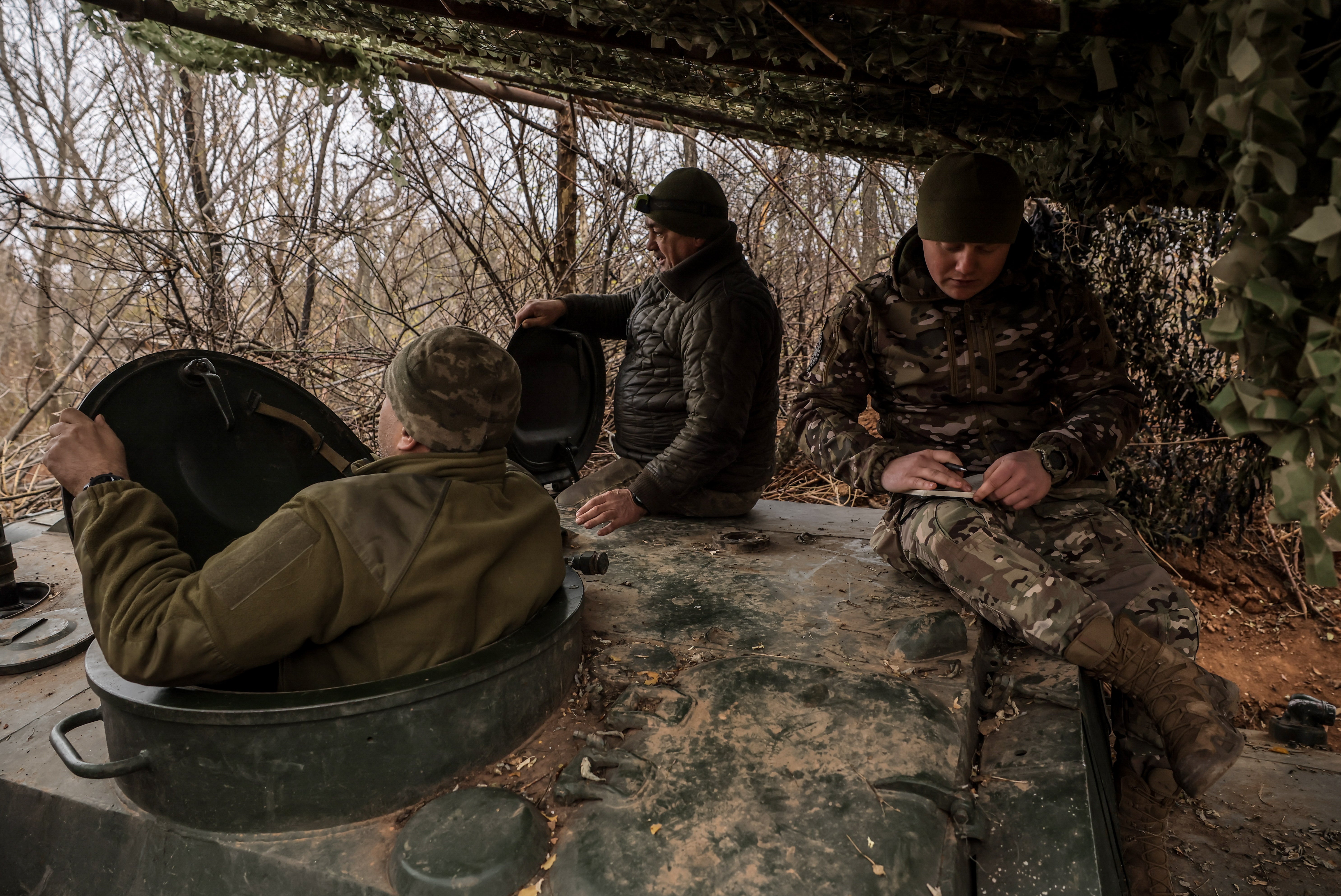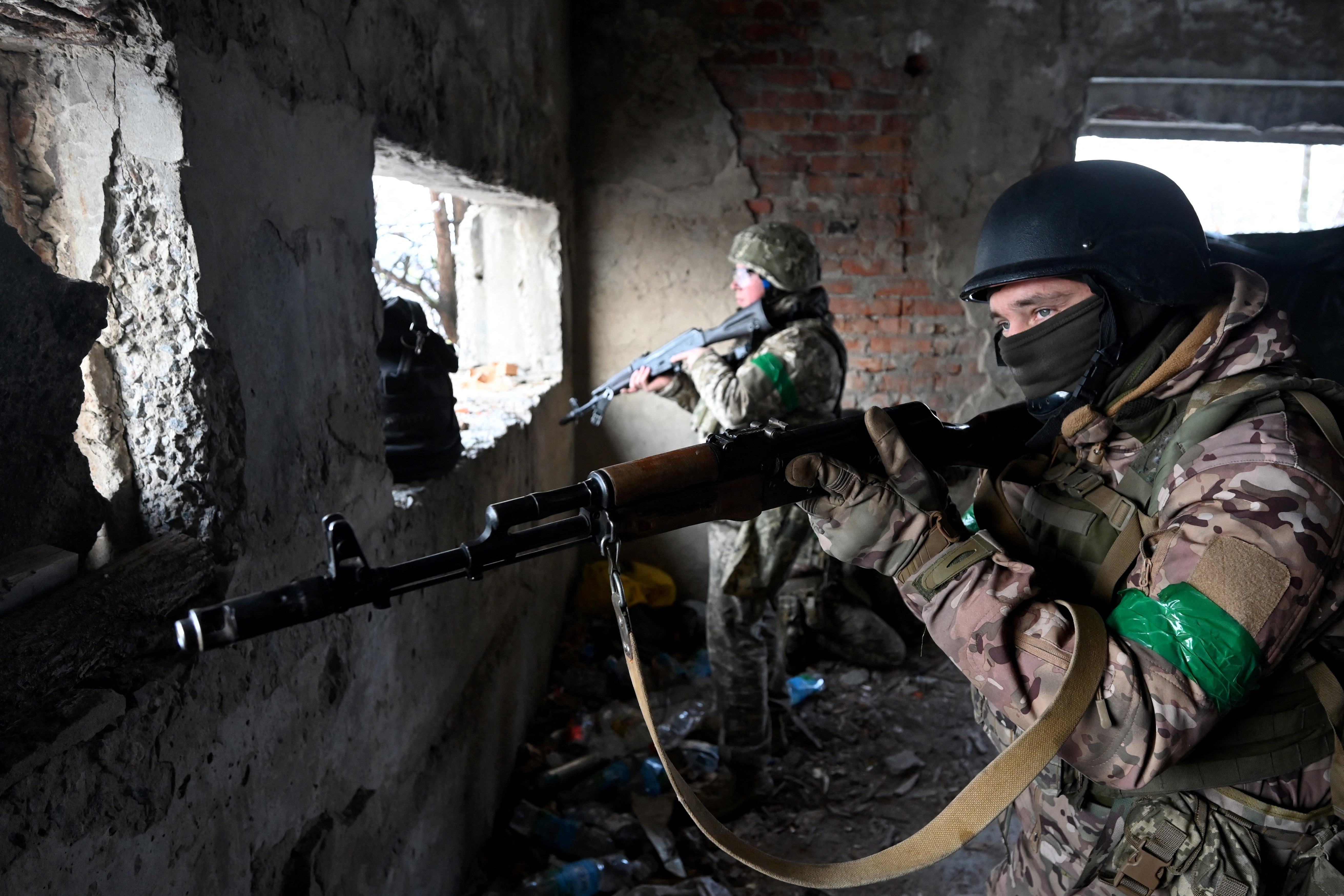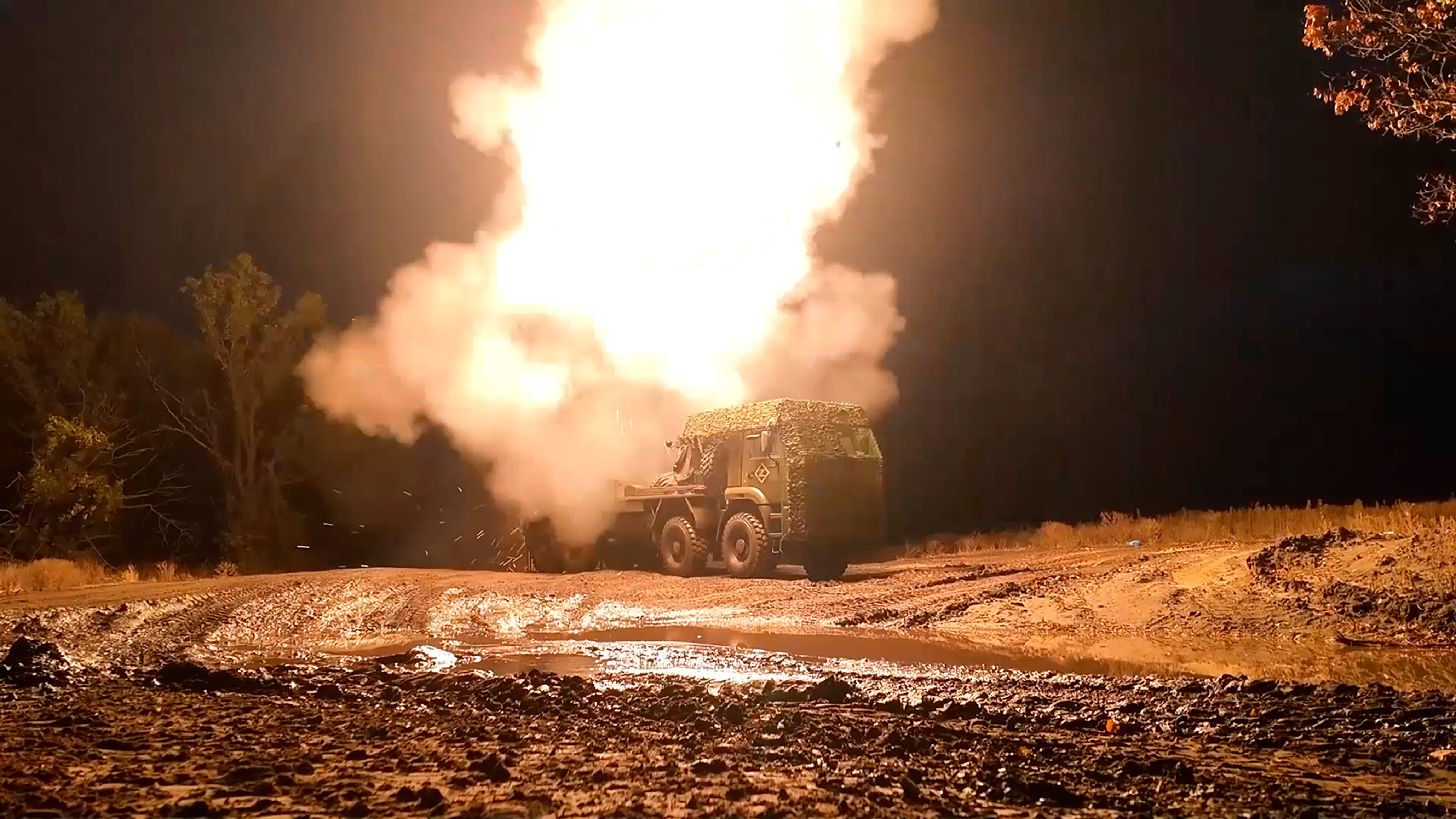Putin’s forces intensify assaults across Ukraine: ‘They don’t care how many men they lose’
Ukrainian soldiers are under pressure, from Donetsk in the east to Kharkiv in the north – while Vladimir Putin also wants to reclaim the territory taken in Russia’s Kursk region before Donald Trump takes office. Askold Krushelnycky talks to officers about the fight to stop Russia’s troops


As Russian forces intensify attacks against hard-pressed Ukrainian soldiers along much of the 600-mile front line, a senior Ukrainian military source has told The Independent that Moscow will keep up the assaults until the moment of Donald Trump’s inauguration – despite the huge troop losses Vladimir Putin’s forces are suffering.
The colonel, who has requested not to be named, says both Ukraine and Russia have to take seriously Trump’s campaign promises to quickly end the war, although the president in waiting has not explained how he plans to bring about a ceasefire.
“What is clear,” says the colonel, “is that the Russians want to take as much Ukrainian territory as possible and clear Ukrainian forces out of the Kursk [Russian border] region we occupied in August before any negotiations begin.”
Ukraine’s General Staff has said the relentless Russian attacks are aimed at fulfilling Putin’s oft-repeated ambition to control all of Ukraine’s eastern Donetsk and Luhansk regions, to create a buffer zone along Russia’s border, to broaden the areas Russia already occupies in the Zaporizhzhia and Kherson regions, and to open up a new front threatening the Dnipropetrovsk region in central Ukraine.
“So they will continue – probably try to intensify – their attacks, regardless of the huge losses they are suffering with their continuous assaults,” the colonel says. “The weather is getting colder now, with temperatures turning from plus to below zero. That produces early morning fog in many places, which they have successfully exploited to make partial inroads with surprise attacks on Ukrainian strongholds such as Kurakhove and Chasiv Yar in the Donetsk region. Fog and rain [have] also impeded our aerial surveillance so that we sometimes miss the signs of impending attacks.”

To that end, says a Ukrainian General Staff report, “the enemy is pressing Ukrainian forces with a high intensity of air attacks, multiple-launch rockets, and artillery and attack drones along the entire line of contact.”
In recent weeks, both sides in the conflict have increased the number of drone attacks they have launched. But Russia, with far greater resources and huge supplies of Shahed suicide drones from Iran, can launch far larger swarms of attack drones, which have caused many civilian, as well as Ukrainian military, casualties.
The Ukrainian army report also surmises that “the enemy has redeployed reserves [marines and airborne troops] from the Kramatorsk and Orikhiv areas [in eastern Ukraine] to the territory of Kursk [in Russia, which is occupied by Ukraine], which is evidence of preparations for large-scale advances there.”
Ukrainian, British, American and other sources estimate that Russian battlefield casualties in the war – counting both dead and injured – are in the hundreds of thousands.
A Ukrainian lieutenant serving in the Kramatorsk area says: “The Russians don’t care how many men they lose. We kill many times more of them than they us. Earlier this month they launched a mass attack against one of our positions near here, and we killed 120 of them and destroyed several armoured vehicles and motorcycles they attacked on, and we didn’t lose a single man.
“That was a great day for us, but exceptional. However, it’s not unusual for their casualties to be many times higher than ours. But nevertheless, they manage to kill or severely wound people from our side so that we lose our comrades, and there are far more of them than us, and they keep coming.”

Whereas Russia’s leader, Putin, and the country’s high command are indifferent to how many men they lose as long as they creep forward – however slowly – Ukraine does not sacrifice its soldiers so wastefully, as the arithmetic of attritional fighting overwhelmingly favours Russia with its “meat-grinder” approach. Allowing men to be killed in this manner would not be tolerated by Ukrainian society.
As the Ukrainian colonel explains: “The strategy for our military is to prevent [Russian troops] as much as possible from taking more territory, but to fall back from extreme situations in an organised way to pre-prepared positions, rather than lose many of our people, dead and wounded, or risk the capture of units.”
For more than six months at the end of 2023 and the start of this year, political squabbling in Washington delayed vital supplies of US ammunition and weapons to Ukraine. The shortage of ammunition gave Russia the advantage it needed to take, in February, the town of Avdiivka, which allowed its forces to break a stalemate and to fan out and attack other Ukrainian front lines in Donetsk. That gave the Russian military an edge, and the initiative, in all of the subsequent fighting in eastern Ukraine.
The colonel says that the supply of ammunition – particularly for artillery and missile-launchers – has never reached the previous level. “We are dependent on attack drones to counter their artillery, but they do not compensate nearly enough, and the Russians’ massive artillery attacks are one of the main reasons for their advances,” the colonel says.
So all eyes are now on what Trump might do when he returns to the White House, with fears that he could threaten to withdraw all American aid to force Ukraine into disadvantageous peace negotiations where it will have to cede territory to Russia.

The head of Kyiv’s Crisis Media Centre, and a former Ukrainian ambassador to Washington, Valeriy Chaly, believes that despite those fears, “No real peace plans, unfortunately, exist, and there will not be any in the coming months.
“President Trump does not have any peace plans today. That needs much more work and preparation from many sides, including Russia ... In my opinion, all of these questions will not be resolved until at least the spring,” says Chaly.
Ukraine’s military leadership are still hoping that before he leaves office, Joe Biden will lift all restrictions on Ukraine using US-provided long-range weapons deep inside Russia. That, American and Ukrainian sources have told The Independent, would be able to disrupt, for example, plans thought to be in preparation for the Russian military to launch a massive attack on the Ukrainian forces occupying Kursk.
Ukraine is also hoping that Biden will be able to deliver a multibillion-pound US aid package to help Ukraine in 2025. Volodymyr Zelensky, who met Trump last month in New York, has not said what the incoming president’s peace plans involve, but promised he would outline next week how Ukraine plans to sustain its war effort into next year.
The colonel added: “We hope President Biden will give as much military and financial help as possible before he leaves office, but nothing is certain.
“Ukraine must plan for the worst, and hope that at least some things turn out better.”
Join our commenting forum
Join thought-provoking conversations, follow other Independent readers and see their replies
Comments
Bookmark popover
Removed from bookmarks